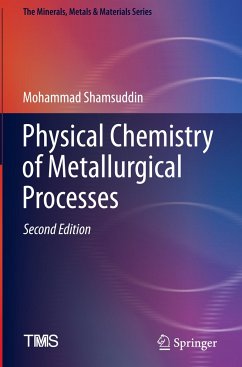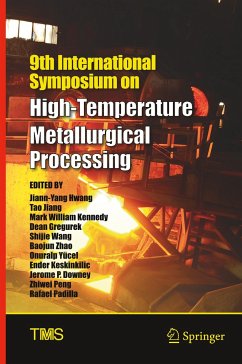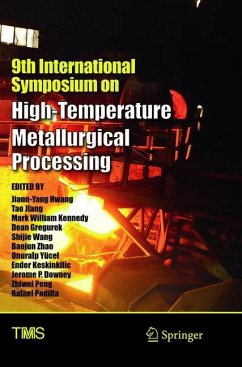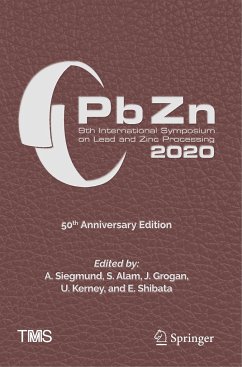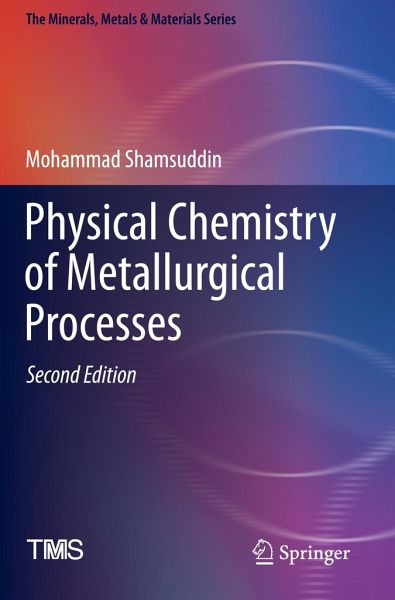
Physical Chemistry of Metallurgical Processes, Second Edition
Versandkostenfrei!
Versandfertig in 6-10 Tagen
54,99 €
inkl. MwSt.
Weitere Ausgaben:

PAYBACK Punkte
27 °P sammeln!
This updated, second edition retains its classroom-tested treatment of physical chemistry of metallurgical topics, such as roasting of sulfide minerals, matte smelting, converting, structure, properties and theories of slag, reduction of oxides and reduction smelting, interfacial phenomena, steelmaking, secondary steelmaking, role of halides in extraction of metals, refining, hydrometallurgy and electrometallurgy, and adds new data in worked-out examples as well as up-to-date references to the literature. The book further explains the physical chemistry of various metallurgical topics, steps i...
This updated, second edition retains its classroom-tested treatment of physical chemistry of metallurgical topics, such as roasting of sulfide minerals, matte smelting, converting, structure, properties and theories of slag, reduction of oxides and reduction smelting, interfacial phenomena, steelmaking, secondary steelmaking, role of halides in extraction of metals, refining, hydrometallurgy and electrometallurgy, and adds new data in worked-out examples as well as up-to-date references to the literature. The book further explains the physical chemistry of various metallurgical topics, steps involved in extraction of metals, such as roasting, matte smelting/converting, reduction smelting, steelmaking reactions, deoxidation, stainless steelmaking, vacuum degassing, refining, leaching, chemical precipitation, ion exchange, solvent extraction, cementation, gaseous reduction and electrowinning. Each topic is illustrated with appropriate examples of applications of the techniquein extraction of some common, reactive, rare, or refractory metal together with worked out problems explaining the principle of the operation. The problems require imagination and critical analyses and also encourage readers for creative application of thermodynamic data in metal extraction.
Updates and condenses text throughout the book by sequential arrangement of paragraphs in different chapters;Maximizes readers' understanding of the physicochemical principles involved in extraction/production of common and rare/reactive metals by pyro- as well as hydrometallurgical routes;Reinforces concepts presented with worked examples in each chapter explaining the process steps;Explains the physical chemistry of various metallurgical steps, such as roasting, matte smelting/converting, and reduction smelting, steelmaking, aqueous processing etc. in extraction of metals;Collects and uniformly presents scattered information on physicochemical principles of metal production from various books and journals.
Updates and condenses text throughout the book by sequential arrangement of paragraphs in different chapters;Maximizes readers' understanding of the physicochemical principles involved in extraction/production of common and rare/reactive metals by pyro- as well as hydrometallurgical routes;Reinforces concepts presented with worked examples in each chapter explaining the process steps;Explains the physical chemistry of various metallurgical steps, such as roasting, matte smelting/converting, and reduction smelting, steelmaking, aqueous processing etc. in extraction of metals;Collects and uniformly presents scattered information on physicochemical principles of metal production from various books and journals.



